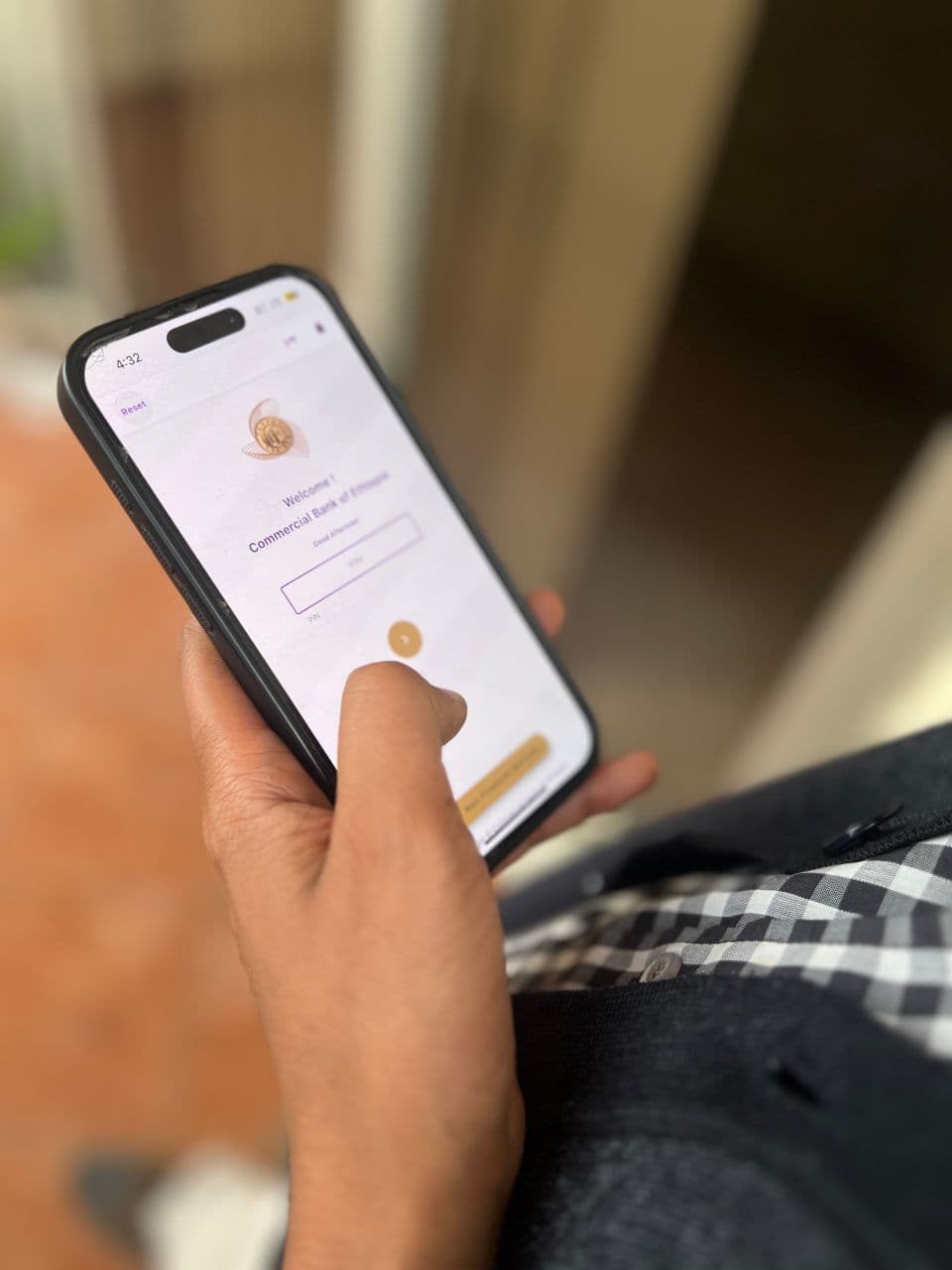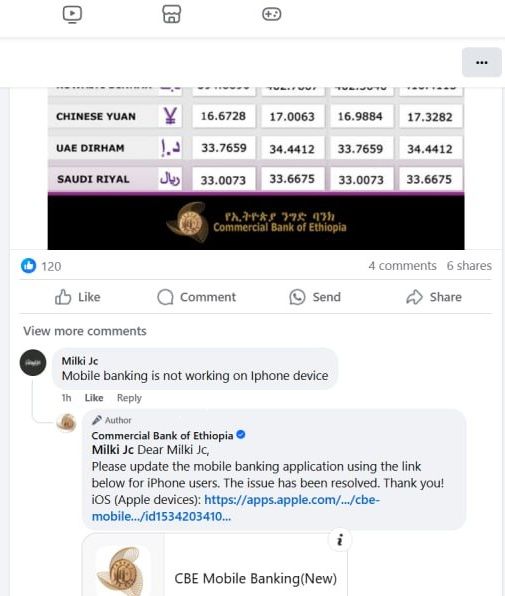Progress for 0 ad
Progress for 1 ad
Progress for 2 ad
Progress for 3 ad


Munir Shemsu
Addis Ababa, Ethiopia

Chatroom debates about the superiority of iOS and Android products are nearly as old as the availability of the two brands on the market. While it may be nearly impossible to get a universal consensus on the matter, there are certainly location-based pros and cons. iPhone users, a clear minority in Ethiopia, have a rather peculiar user experience when dealing with domestic apps.
Mahlet Berhanu (pseudonym), 27, a financial analyst, was fuming with rage two weeks ago after being forced to go to a Commercial Bank of Ethiopia (CBE) branch to reactivate her mobile banking application. After spending nearly two hours at the Bank and being charged 23 birr to reactivate the app, her hassle would be far from over. Hundreds of text messages flooded in over the next few days, repeatedly delivering OTP (One-Time Password) codes due to a system glitch. Mahlet was forced to visit a bank branch again to report the issue. It took another couple of days to resolve.
“It was extremely frustrating,” Mahlet told Shega.
While the flurry of texts was a novelty, she is among the thousands of iPhone users who were required to make a physical visit to reactivate the CBE mobile banking app following updates. However, such a requirement is not in place when updates are rolled out on Android.
Jebril Kedir, another user of Apple’s smartphone, was recently shocked to discover that his Bank of Abyssinia mobile banking app failed to show service charges on certain transactions, such as transfers from the app to a mobile wallet.
He was particularly surprised to discover that his cousin’s phone, an Android, vividly displayed the service charges when sending money to a mobile wallet.
“Why would there be differences?” he questioned to Shega.

Differences in-app features for iOS and Android users, in addition to the inability to access seamless updates, have been reported anecdotally by several users. One user said he had to visit a bank branch four times in two months to reactivate his mobile banking app.
Access to local apps is also limited for iPhone users, as many local developers either skip creating an iOS version or postpone it for a future launch. For example, a search for "Ethiopia Calendar" on the App Store yields only 10 results, while the results on Google Play are evidently larger, offering several filters that help users refine their searches and discover similar local apps.
Sources close to the bank acknowledge the ongoing challenges in publishing apps for iOS devices. However, they also noted that some issues have been resolved, mentioning that a letter was sent to Apple last year.
However, the issue is not a challenge merely faced by local mobile banking apps, as a slew of other service providers also showcase different features for Android phones and iPhones. According to Apple’s transparency report published two years ago, its store rejected over 1.7 million app submissions in a single year. The leading cause for rejections was performance-related, accounting for nearly 62% of the rejected applications. The other reasons include safety, business, design, and legal reasons.
Apple’s guidelines are universally strict with even streaming giants like Spotify reporting rejections for their iOS apps for failing to meet certain terms of agreement.
Unbeknownst to most customers, the app development environment for Android and IOS devices is strikingly different. Aesthetics, costs, and development studios are among the differences between iOS and Android apps, which stretch down to the level of programming languages. Objective-C and Swift are the primary languages used for the former while Java has been the preferred modus operandi in the Android space alongside Kotlin.
Some reports pin the development difference on one central point— Android allows for several open-source functionalities while the IOS ecosystem is controlled and highly standardized. Furthermore, an Apple developer’s account costs around $99 and $299 for the enterprise version, while Google charges a one-time payment of $25. An amount that could become a source of financial concern for Ethiopian developers.
Melake Wubshet a seasoned developer based out of Ethiopia, says several issues collude to create differences in creating apps for the two systems. He pointed out that the necessity of having a Macintosh computer to create an iOS-suitable app could also become a barrier for Ethiopians.
“iOS developers are also not in abundant supply in Ethiopia,” Melake told Shega.
He also referred to the larger market share of Android devices in Ethiopia as one of the reasons for the relatively higher number of developers in the country.
Some sites estimate the share of iOS devices in Ethiopia to be around 3.86% of the mobile operating ecosystem. As a result, many developers don't prioritize iOS versions, seeing them as unnecessary. Additionally, developing for iOS is complex and costly, making it less appealing in a market with limited demand.
The experienced developer further highlighted that complexities in the iOS ecosystem extend to difficulties not only in creating the apps but publishing them.
This issue appears to be global as well. Developers have reported app rejections for "seemingly arbitrary reasons". Last year, Epic Games, the American video game and software developer and publisher, called out Apple for its "arbitrary, obstructive" iOS game store rejections.
👏
😂
❤️
😲
😠

Munir Shemsu
Munir S. Mohammed is a journalist, writer, and researcher based in Ethiopia. He has a background in Economics and his interest's span technology, education, finance, and capital markets. Munir is currently the Editor-in-Chief at Shega Media and a contributor to the Shega Insights team.
Your Email Address Will Not Be Published. Required Fields Are Marked *